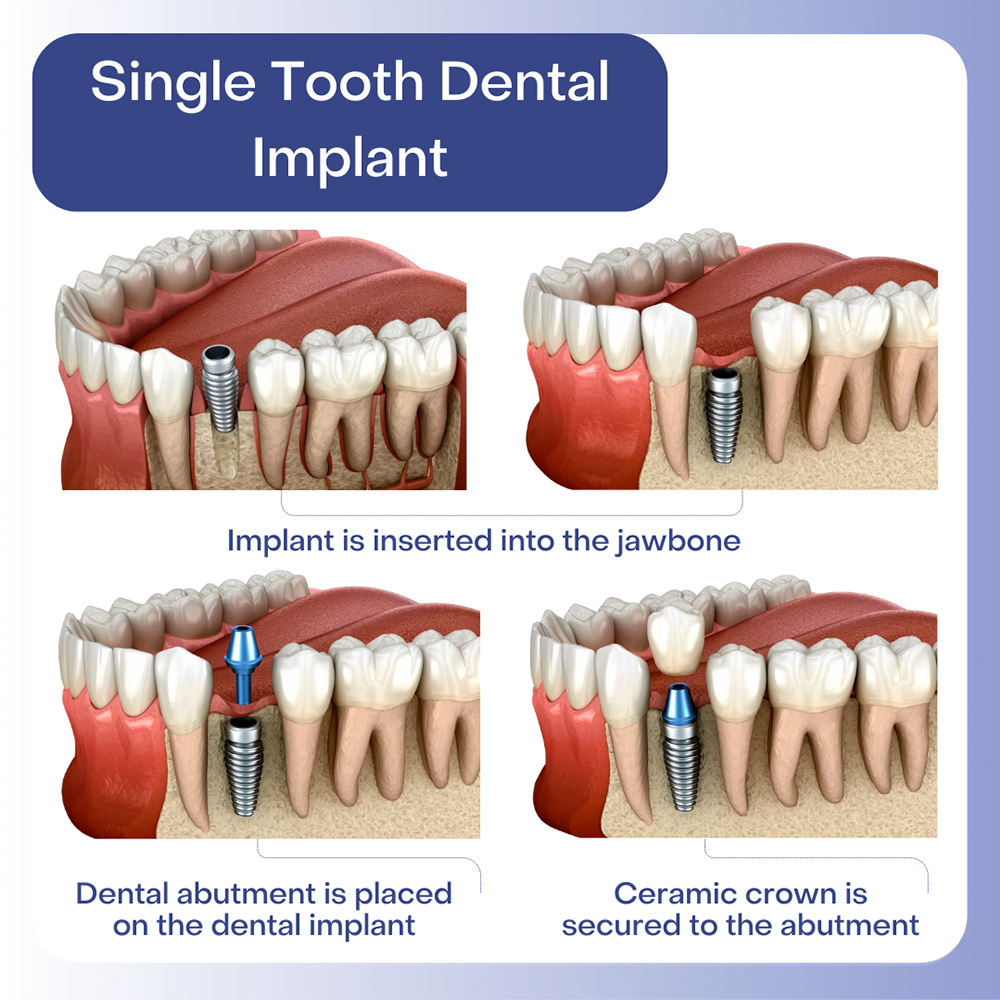How Dental Sense can Save You Time, Stress, and Money.
How Dental Sense can Save You Time, Stress, and Money.
Blog Article
The Definitive Guide for Dental Sense
Table of ContentsThe Ultimate Guide To Dental SenseFacts About Dental Sense UncoveredThe Best Guide To Dental SenseDental Sense Things To Know Before You Get This
are clinical tools operatively dental implanted right into the jaw to restore an individual's capacity to eat or their look. They supply assistance for fabricated (fake) teeth, such as crowns, bridges, or dentures. When a tooth is shed due to injury or disease, a person can experience complications such as fast bone loss, faulty speech, or modifications to chewing patterns that cause pain.Dental implant systems contain a dental implant body and oral implant joint and may also consist of a joint addiction screw. Kids dental. The dental implant body is surgically inserted in the jawbone instead of the tooth's origin. The dental implant abutment is generally connected to the dental implant body by the joint addiction screw and expands through periodontals right into the mouth to sustain the attached synthetic teeth
(https://www.storeboard.com/dentalsense)Structure of The Dental Implant System picking oral implants, talk to your dental service provider regarding the potential benefits and risks, and whether you are a candidate for the procedure. Things to consider: Your total health is an important element in identifying whether you are a great candidate for dental implants, the length of time it will certainly require to recover, and the length of time the implant might stay in area.
Smoking may affect the recovery procedure and reduce the long-lasting success of the implant. The recovery procedure for the implant body may take a number of months or longer, during which time you normally have a temporary abutment instead of the tooth. the oral implant treatment: Carefully comply with the dental health directions given to you by your oral provider.
Some Of Dental Sense
Implant failure can cause the need for one more surgery to deal with or replace the dental implant system. Restores the capacity to chew Brings back cosmetic appearance Aids keep the jawbone from reducing due to bone loss Preserves the wellness of the bordering bone and gum tissues Aids maintain surrounding (close-by) teeth secure Improves lifestyle Damage to bordering natural teeth throughout implant positioning Injury to the surrounding cells throughout surgery, such as sinus perforation Injury throughout surgical treatment (as an example, fracture of bordering jawbone) Poor feature, such as really feeling like the teeth do not bite with each other generally A sensation that the tooth is loosened or twisting in location arising from an abutment screw loosening Implant body failure (looseness of the implant body) because of systemic infection, which may be most likely in patients with uncontrolled diabetics issues as a result of neighborhood infection in bone and gums supporting the implant body because of delayed healing, which might important source be more probable in people who smoke Trouble cleaning the gums around the dental implant, causing poor oral hygiene Untreated periodontal condition Post-surgical pins and needles as a result of nerve impingement or damages Constantly inform healthcare suppliers and imaging service technicians that you have oral implants before any kind of magnetic vibration imaging (MRI) or x-ray treatments.
FDA is not knowledgeable about any type of unfavorable events reported for MRI or x-ray procedures with oral implants. Oral implants systems are typically constructed from products that comply with worldwide consensus standards of the International Company for Standardization (ISO) or ASTM International. These criteria have details of what makes a safe product.

A dental implant is a structure that changes a missing out on tooth. With screw-like devices, the doctor inserts an implant into the jawbone, and it acts as a support for an artificial tooth, called a crown.
The Definitive Guide for Dental Sense
Some people are not eligible for dental implant surgical treatment. It is for dental specialists to operate people with: acute illnessuncontrollable metabolic diseasebone or soft tissue illness or infectionIf these problems are dealt with, a person can have the surgical treatment. In, dental surgeons abstain from operating individuals with: If individuals with any one of the above go through dental implant surgery, there is a higher risk of the dental implant falling short.

Dental dental implant surgical procedure is an individualized process. It's not the exact same for everyone. But the complying with offers a general summary of what you can anticipate your dental professional, dental specialist, periodontist or prosthodontist to do: Place the dental implant operatively. Give you time to heal. Attach the article and last crown, bridge or denture.
Next, your specialist will meticulously put the oral implant into your jaw. If your implant is near the front of your mouth, your dental professional will make a temporary tooth for you to put on up until you recover.
Dental Sense Can Be Fun For Anyone
Your service provider can inform you what to expect in your situation. Throughout the healing phase, your jawbone should fuse to the oral implant. This process, called osseointegration, is essential for stability and lasting success. This process can take anywhere from three to 9 months. In some situations, it might take longer.
As soon as your implant heals, your dental practitioner can connect the abutment (little adapter article) and your final reconstruction (crown, bridge or denture). This generally takes regarding one hour to finish and might need a second minor surgery. You should not really feel any type of pain during your oral implant treatment since your service provider will make use of medication to numb your periodontals.
Report this page